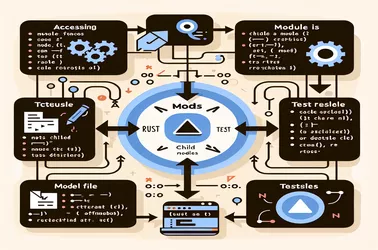Writing flexible and reusable generic code in Rust requires an understanding of how to handle reverse trait boundaries. The difficulties of eliminating redundancy in where clauses, encapsulating restrictions in a trait, and possible solutions utilizing helper traits and related types were all covered in this conversation. Although direct implementation of reverse bounds is not possible due to Rust's rigid type system, methods like specialization and higher-ranked trait bounds offer substitutes. These ideas are especially helpful for large-scale projects where maintainability and complexity reduction are crucial.
This article explains how to use a test file in Rust to access a child module. It discusses how to properly structure Rust modules, how to arrange code using the mod.rs file, and how to use the use keyword to reference these modules in test files.
Using inline assembly to set the stack pointer in a bare-metal Rust bootloader is covered in this lesson. In order to avoid corrupting local variables, it checks for potential issues and concerns about undefined behavior. It also ensures that the stack pointer is initialized correctly.
Using Rust and the Gmail API to integrate automated communication systems allows developers to deliver messages straight from applications. This include creating a service account, granting the required access, and properly handling MIME types, which includes attachments.



